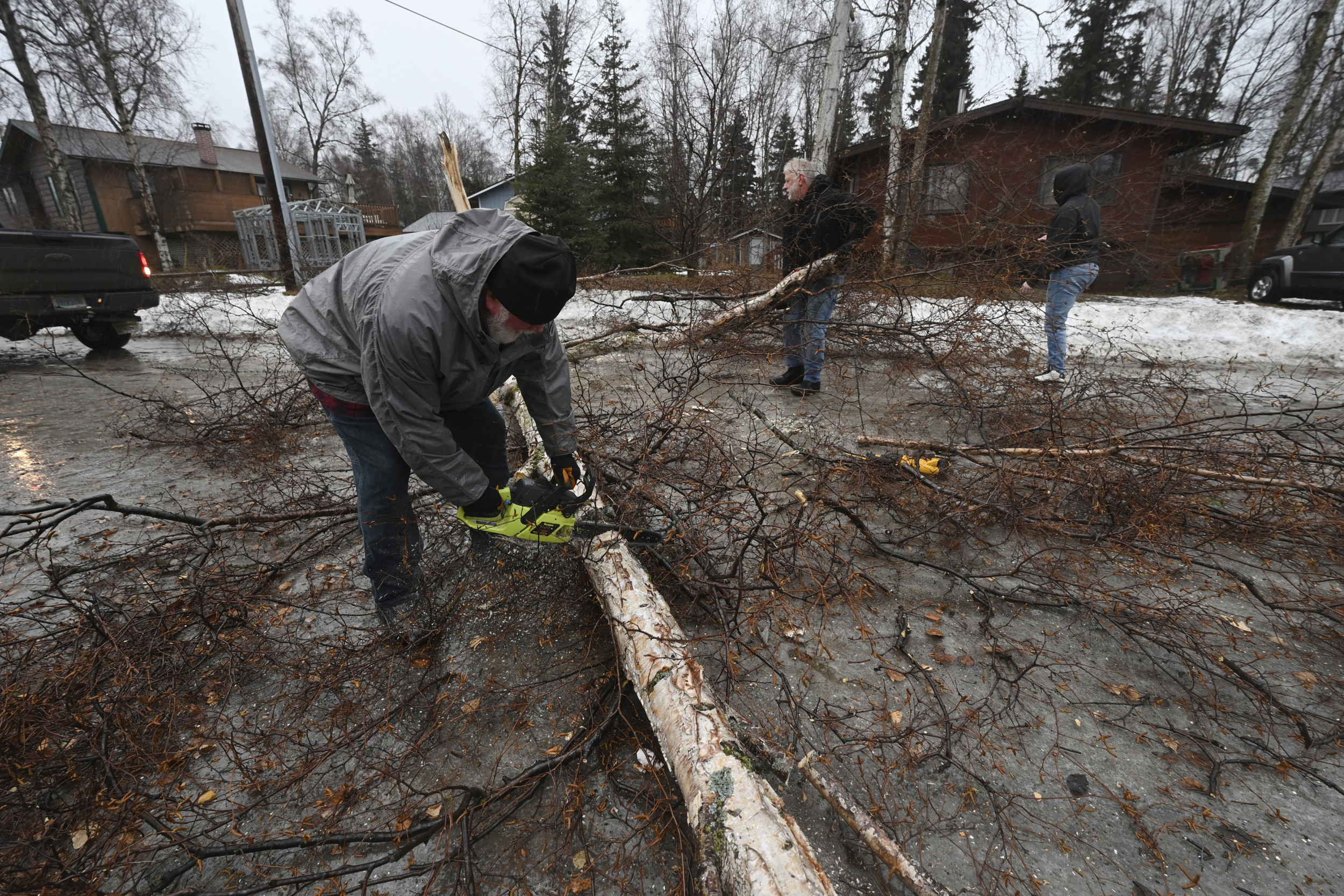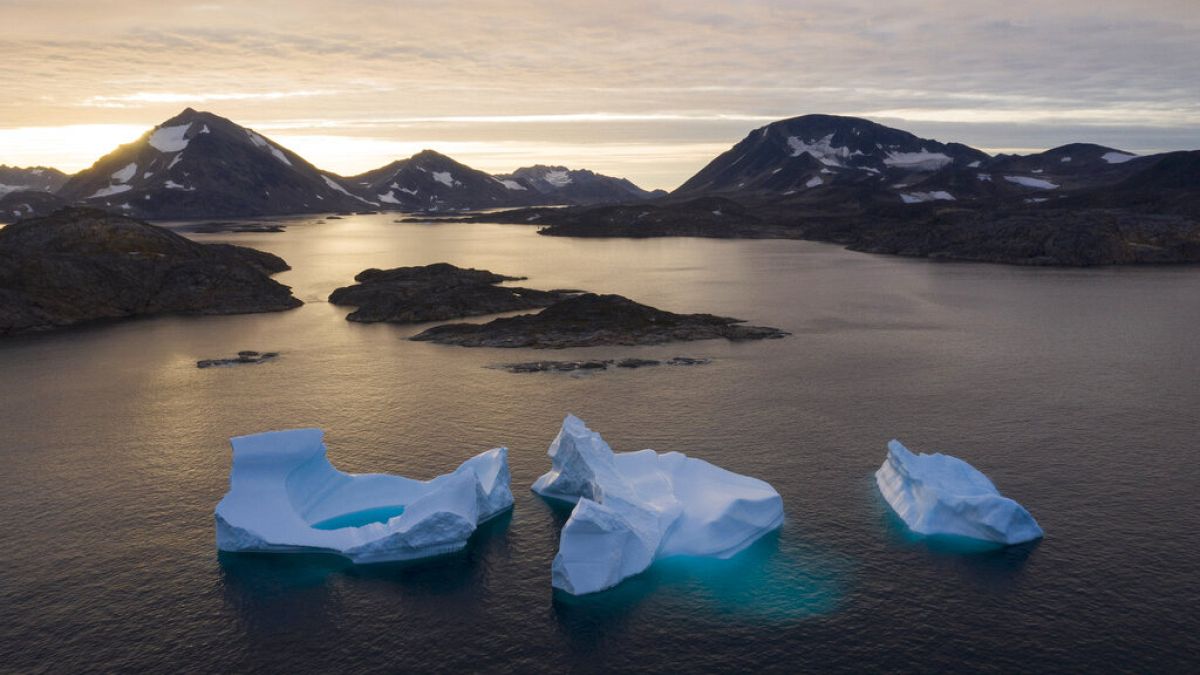Alaska
5 years after son’s death, Southcentral mom wants new criminal statute in Alaska
/cloudfront-us-east-1.images.arcpublishing.com/gray/YWAPO2D47RF5PAESKJXKHSHY44.jpg)
ANCHORAGE, Alaska (KTUU) – In June of 2018, 40-year-old Paul Winter — a son, husband and father of one — was killed while rollerblading in Anchorage. Soon after, criminal charges would be filed against a teenager who court documents show was driving recklessly and under the influence when she fatally struck Winter with her vehicle near the intersection of Cordova Street and Ninth Avenue in downtown Anchorage.
Five years later — and just days after the sentencing of the woman who took her son’s life — Winter’s mother has taken on a new mission, setting out on a journey to change sentencing ranges and create an additional consequence for when criminal cases involve victims with children.
“That’s what I base my hope in, is that there will be changes for other families,” Bonnie Steinriede said, “after we’ve gone through this – and it’s happening, it just happens over and over and over.
“It was draining for the entire family,” she said of the recent sentencing, “so we’re all glad that it’s over.”
The young woman who struck and killed Winter before fleeing the scene agreed to a plea deal and was sentenced Friday to seven years in prison.
However, Steinriede isn’t the only person Winter left behind with his death. His father had already died, but he had a brother and was married. He also had a young daughter who was just 3 years old at the time of his death.
“She looks like him, she’s very outgoing like he was, very funny sense of humor,” Steinriede said. “There’s a lot about her that I see in Paul. And she misses her dad very, very much, and has a lot of memories. Even though she was only three years old when this happened, she has lots of memories, and she calls him her ‘Superhero Dad.’”
The youngster is a big part of why Steinriede has taken on such an immense challenge — she wants a law put into place that requires child support from people convicted of deadly crimes involving impaired driving.
“Of course, money cannot bring a loved one back,” Steinriede said. “Neither can the amount of time served. But it can make things easier on the family.”
She is also looking for changes to sentencing ranges, and in particular, for the addition of vehicular homicide to Alaska’s criminal statutes — which currently only include criminally negligent homicide, manslaughter, and first-degree and second-degree murder.
“There is not a vehicular homicide law in the state of Alaska,” she said. “That needs to change.”
Department of Law Criminal Division Deputy Attorney General John Skidmore said that Alaska is one of only a few states in the entire United States that lump vehicular homicide into other categories rather than it being its own. Here, the criminally negligent homicide, manslaughter, murder 1 and murder 2 statutes are used to address it instead.
“A vehicle, driven by someone, causes the death of someone other than the driver, that’s referred to as vehicular homicide,” Skidmore said. “And with the exception of three or four states, every other state in the country has a specific statute to address that conduct and therefore specific sentences to address that conduct.”
Ranges were established in criminal code when Alaska became a state, Skidmore said, and they were, at first, presumptive, to include set terms. Then, around the time the Supreme Court decision on Blakely v. Washington came out, the State Legislature here made adjustments.
“In a nutshell, Blakely said that if a court was going to impose greater than the presumptive sentence, then a jury had to find proof beyond a reasonable doubt, on a factual basis the underlying reason, to exceed the presumptive range,” Skidmore said.
As it was with the original establishment of presumptive sentences and sentencing ranges, changing them requires the power of the state legislature.
“A decision for each state legislature to make,” Skidmore added, “and to implement in their state for what they think is most appropriate there.”
A half-decade after her son’s death, Steinriede said she’s simply hopeful that other families might see change in the future.
“This is what’s going to help bring some closure in this whole tragedy,” Steinriede said, “is knowing that something positive has come out of it.”
A memorial bench dedicated in Paul’s name is also featured within Kincaid Park, which the public is free to utilize as they travel the trails there.
Copyright 2023 KTUU. All rights reserved.

Alaska
Arctic hotspots study reveals areas of climate stress in Northern Alaska and Siberia

Ecological warning lights have blinked on across the Arctic over the last 40 years, according to new research, and many of the fastest-changing areas are clustered in Siberia, the Canadian Northwest Territories, and Alaska.
An analysis of the rapidly warming Arctic-boreal region, published in Geophysical Research Letters, provides a zoomed-in picture of ecosystems experiencing some of the fastest and most extreme climate changes on Earth.
Many of the most climate-stressed areas feature permafrost, or ground that stays frozen year-round, and has experienced both severe warming and drying in recent decades.
To identify these “hotspots,” a team of researchers from Woodwell Climate Research Center, the University of Oslo, the University of Montana, the Environmental Systems Research Institute (Esri), and the University of Lleida used more than 30 years of geospatial data and long-term temperature records to assess indicators of ecosystem vulnerability in three categories: temperature, moisture, and vegetation.
Building on assessments like the NOAA Arctic Report Card, the research team went beyond evaluating isolated metrics of change and looked at multiple variables at once to create a more complete, integrated picture of climate and ecosystem changes in the region.
“Climate warming has put a great deal of stress on ecosystems in the high latitudes, but the stress looks very different from place to place and we wanted to quantify those differences,” said Dr. Jennifer Watts, Arctic program director at Woodwell Climate and lead author of the study.
“Detecting hotspots at the local and regional level helps us not only to build a more precise picture of how Arctic warming is affecting ecosystems, but to identify places where we really need to focus future monitoring efforts and management resources.”
The team used spatial statistics to detect “neighborhoods,” or regions of particularly high levels of change during the past decade.
“This study is exactly why we have developed these kinds of spatial statistic tools in our technology. We are so proud to be working closely with Woodwell Climate on identifying and publishing these kinds of vulnerability hotspots that require effective and immediate climate adaptation action and long-term policy,” said Dr. Dawn Wright, chief scientist at Esri. “This is essentially what we mean by the ‘Science of Where.’”
The findings paint a complex and concerning picture.
The most substantial land warming between 1997–2020 occurred in the far eastern Siberian tundra and throughout central Siberia. Approximately 99% of the Eurasian tundra region experienced significant warming, compared to 72% of Eurasian boreal forests.
While some hotspots in Siberia and the Northwest Territories of Canada grew drier, the researchers detected increased surface water and flooding in parts of North America, including Alaska’s Yukon-Kuskokwim Delta and central Canada. These increases in water on the landscape over time are likely a sign of thawing permafrost.
-

Warming severity “hotspots” in Arctic-boreal region between 1997-2020 were detected by analyzing multiple variables including satellite imagery and long-term temperature records. Watts et al., 2025, Geophysical Research Letters. Credit: Christina Shintani / Woodwell Climate Research Center
-

Map of areas of severe to extremely severe drying in the Arctic-boreal region. Drying severity was determined by analyzing multiple variables from the satellite record. Watts et al., 2025, Geophysical Research Letters. Credit: Christina Shintani / Woodwell Climate Research Center
-

Map of areas that experienced vegetation climate stress in the Arctic-boreal region between 1997-2020 as detected by multiple variables from the satellite record. Watts et al., 2025, Geophysical Research Letters. Credit: Christina Shintani / Woodwell Climate Research Center
Among the 20 most vulnerable places the researchers identified, all contained permafrost.
“The Arctic and boreal regions are made up of diverse ecosystems, and this study reveals some of the complex ways they are responding to climate warming,” said Dr. Sue Natali, lead of the Permafrost Pathways project at Woodwell Climate and co-author of the study.
“However, permafrost was a common denominator—the most climate-stressed regions all contained permafrost, which is vulnerable to thaw as temperatures rise. That’s a really concerning signal.”
For land managers and other decisionmakers, local and regional hotspot mapping like this can serve as a more useful monitoring tool than region-wide averages. Take, for instance, the example of COVID-19 tracking data: maps of county-by-county wastewater data tend to be more helpful tools to guide decision making than national averages, since rates of disease prevalence and transmission can vary widely among communities at a given moment in time.
So, too, with climate trends: local data and trend detection can support management and adaptation approaches that account for unique and shifting conditions on the ground.
The significant changes the team detected in the Siberian boreal forest region should serve as a wakeup call, said Watts.
“These forested regions, which have been helping take up and store carbon dioxide, are now showing major climate stresses and increasing risk of fire. We need to work as a global community to protect these important and vulnerable boreal ecosystems, while also reining in fossil fuel emissions.”
More information:
Regional Hotspots of Change in Northern High Latitudes Informed by Observations From Space, Geophysical Research Letters (2025). DOI: 10.1029/2023GL108081
Provided by
Woodwell Climate Research Center
Citation:
Arctic hotspots study reveals areas of climate stress in Northern Alaska and Siberia (2025, January 16)
retrieved 16 January 2025
from https://phys.org/news/2025-01-arctic-hotspots-reveals-areas-climate.html
This document is subject to copyright. Apart from any fair dealing for the purpose of private study or research, no
part may be reproduced without the written permission. The content is provided for information purposes only.
Alaska
Alaska Airlines Flight Attendant Gets Fired For Twerking On The Job

A flight attendant’s viral TikTok video ended up costing her job. Nelle Diala, who was working as a flight attendant with Alaska Airlines for over six months was reportedly fired from her job after recording a twerking video while at work, the New York Post reported. After losing her job for “violating” the airline’s “social media policy”, Diala set up a GoFundMe page for financial support. The twerking and dancing video, posted by Diala on her personal social media account, went viral on TikTok and Instagram. The video was captioned, “ghetto bih till i D-I-E, don’t let the uniform fool you.”
After being fired, Diala reposted the twerking video with the new caption: “Can’t even be yourself anymore, without the world being so sensitive. What’s wrong with a little twerk before work, people act like they never did that before.” She added the hashtag #discriminationisreal.
According to Diala’s GoFundMe page, she posted the “lighthearted video” during a layover. The video was shot in an empty aircraft. She wrote, “It was a harmless clip that was recorded at 6 am while waiting 2 hours for pilots. I was also celebrating the end of probation.”
“The video went viral overnight, but instead of love and support, it brought unexpected scrutiny. Although it was a poor decision on my behalf I didn’t think it would cost me my dream job,” she added.
Also Read: To Wi-Fi Or Not To Wi-Fi On A Plane? Pros And Cons Of Using Internet At 30,000 Feet
Talking about being “wrongfully fired”, she said, “My employer accused me of violating their social media policy. I explained that the video wasn’t intended to harm anyone or the company, but they didn’t want to listen. Without warning, they terminated me. No discussion, no chance to defend myself-and no chance for a thorough and proper investigation.”
The seemingly “harmless clip” has led Diala to lose her “dream job”. She shared, “Losing my job was devastating. I’ve always been careful about what I share online, and I never thought this video, which didn’t even mention the airline by name, would cost me my career. Now, I am trying to figure out how to move forward.”
Alaska
Federal funds will help DOT study wildlife crashes on Glenn Highway

New federal funds will help Alaska’s Department of Transportation develop a plan to reduce vehicle collisions with wildlife on one of the state’s busiest highways.
The U.S. Transportation Department gave the state a $626,659 grant in December to conduct a wildlife-vehicle collision study along the Glenn Highway corridor stretching between Anchorage’s Airport Heights neighborhood to the Glenn-Parks Highway interchange.
Over 30,000 residents drive the highway each way daily.
Mark Eisenman, the Anchorage area planner for the department, hopes the study will help generate new ideas to reduce wildlife crashes on the Glenn Highway.
“That’s one of the things we’re hoping to get out of this is to also have the study look at what’s been done, not just nationwide, but maybe worldwide,” Eisenman said. “Maybe where the best spot for a wildlife crossing would be, or is a wildlife crossing even the right mitigation strategy for these crashes?”
Eisenman said the most common wildlife collisions are with moose. There were nine fatal moose-vehicle crashes on the highway between 2018 and 2023. DOT estimates Alaska experiences about 765 animal-vehicle collisions annually.
In the late 1980s, DOT lengthened and raised a downtown Anchorage bridge to allow moose and wildlife to pass underneath, instead of on the roadway. But Eisenman said it wasn’t built tall enough for the moose to comfortably pass through, so many avoid it.
DOT also installed fencing along high-risk areas of the highway in an effort to prevent moose from traveling onto the highway.
Moose typically die in collisions, he said, and can also cause significant damage to vehicles. There are several signs along the Glenn Highway that tally fatal moose collisions, and he said they’re the primary signal to drivers to watch for wildlife.
“The big thing is, the Glenn Highway is 65 (miles per hour) for most of that stretch, and reaction time to stop when you’re going that fast for an animal jumping onto the road is almost impossible to avoid,” he said.
The city estimates 1,600 moose live in the Anchorage Bowl.
-
/cdn.vox-cdn.com/uploads/chorus_asset/file/25822586/STK169_ZUCKERBERG_MAGA_STKS491_CVIRGINIA_A.jpg)
/cdn.vox-cdn.com/uploads/chorus_asset/file/25822586/STK169_ZUCKERBERG_MAGA_STKS491_CVIRGINIA_A.jpg) Technology1 week ago
Technology1 week agoMeta is highlighting a splintering global approach to online speech
-

 Science5 days ago
Science5 days agoMetro will offer free rides in L.A. through Sunday due to fires
-
/cdn.vox-cdn.com/uploads/chorus_asset/file/25821992/videoframe_720397.png)
/cdn.vox-cdn.com/uploads/chorus_asset/file/25821992/videoframe_720397.png) Technology1 week ago
Technology1 week agoLas Vegas police release ChatGPT logs from the suspect in the Cybertruck explosion
-

 Movie Reviews1 week ago
Movie Reviews1 week ago‘How to Make Millions Before Grandma Dies’ Review: Thai Oscar Entry Is a Disarmingly Sentimental Tear-Jerker
-

 Health1 week ago
Health1 week agoMichael J. Fox honored with Presidential Medal of Freedom for Parkinson’s research efforts
-

 Movie Reviews1 week ago
Movie Reviews1 week agoMovie Review: Millennials try to buy-in or opt-out of the “American Meltdown”
-

 News1 week ago
News1 week agoPhotos: Pacific Palisades Wildfire Engulfs Homes in an L.A. Neighborhood
-

 Business1 week ago
Business1 week agoMeta Drops Rules Protecting LGBTQ Community as Part of Content Moderation Overhaul




















